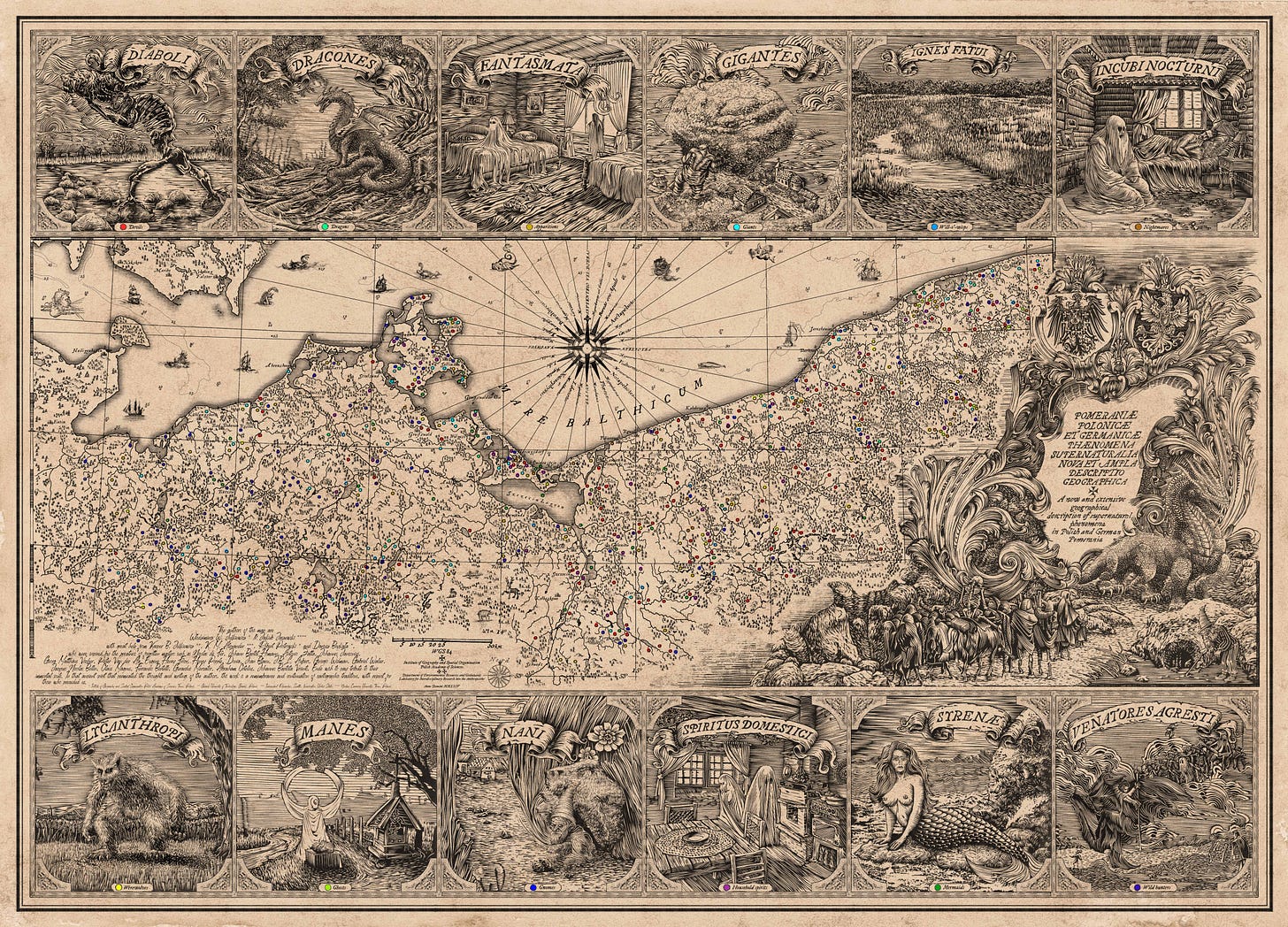Crossroads Roundup: a Map of Demons, a Big Roman Mosaic and a Cherry Tree, and a Winter Art Gallery
The latest news in art, archaeology, culture, and more.

Tracking down folkloric demons in Poland (and a gorgeous map)!
Folklore lovers, this one’s for you. A team of researchers at the Polish Academy of Sciences have put together one of the coolest projects I’ve come across in a while—a map of historic Pomerania and Mecklenberg, which charts the settings of various folktales. The study, “Supernatural beings of Pomerania: postmodern mapping of folkloristic sources,” covers over 1,200 accounts of demons, elves, house spirits, werewolves, dragons and more, all documented by folklorists in the 19th and 20th centuries.
According to ethnologist Dr. Robert Piortrowski, a member of the Interdisciplinary Anthropocene Research Team at the Institute of Geography and Spatial Organisation of the Polish Academy of Sciences:
We were mainly interested in local stories about uncanny events associated with a specific place. For example, religi…


